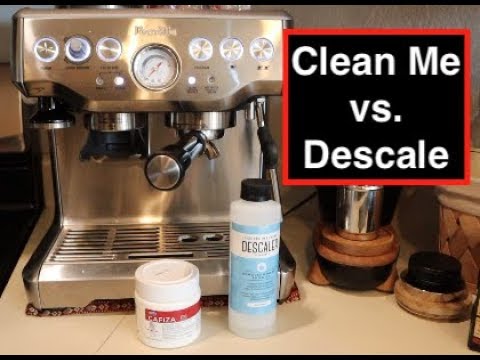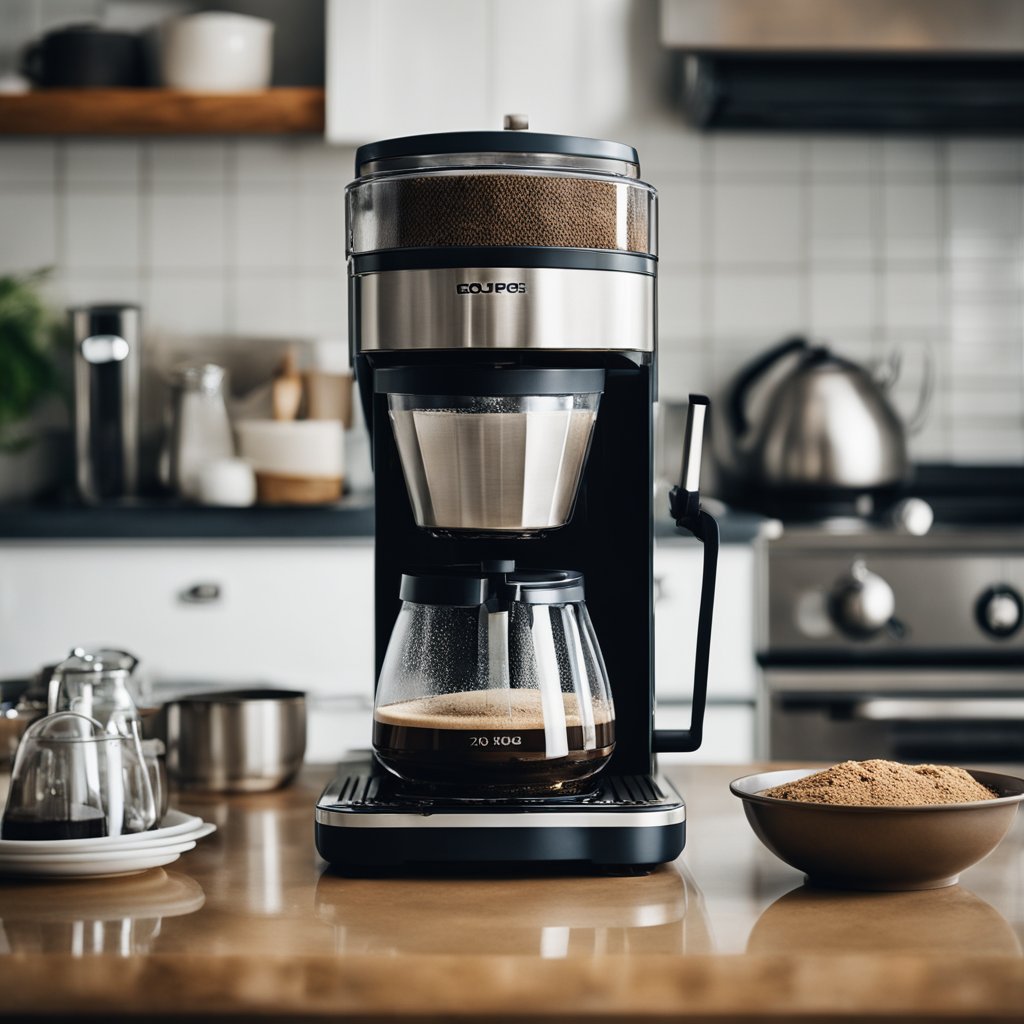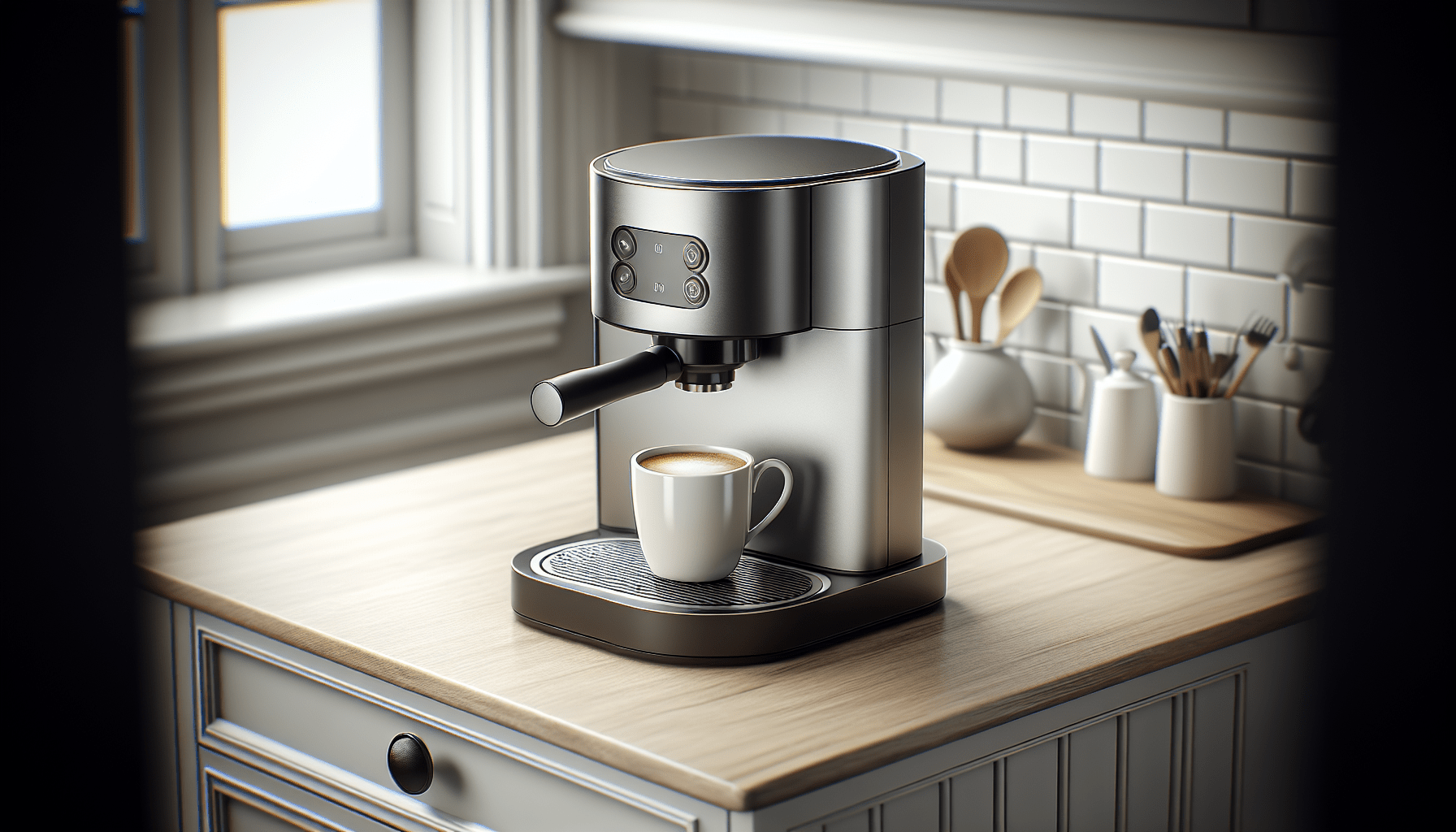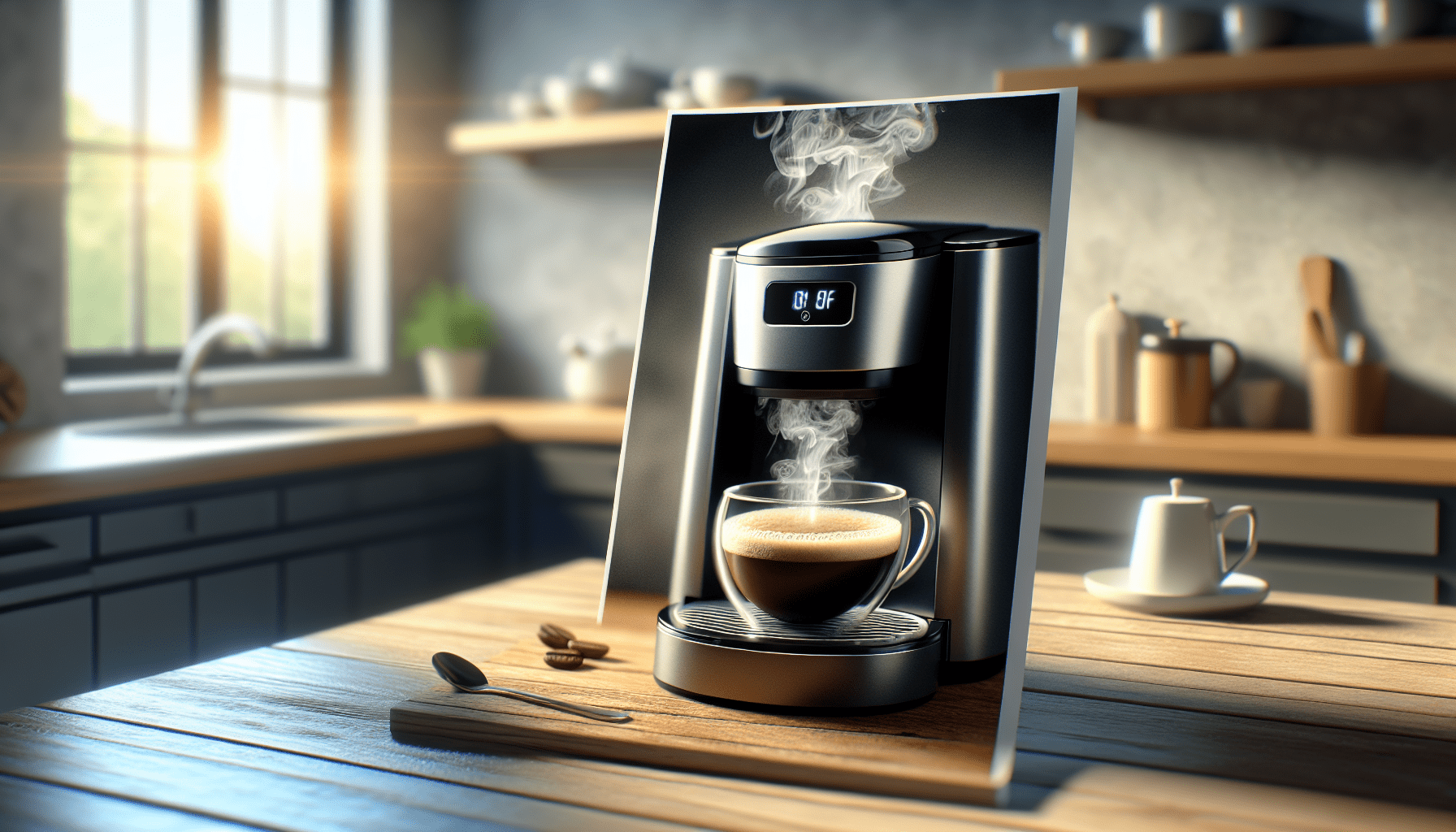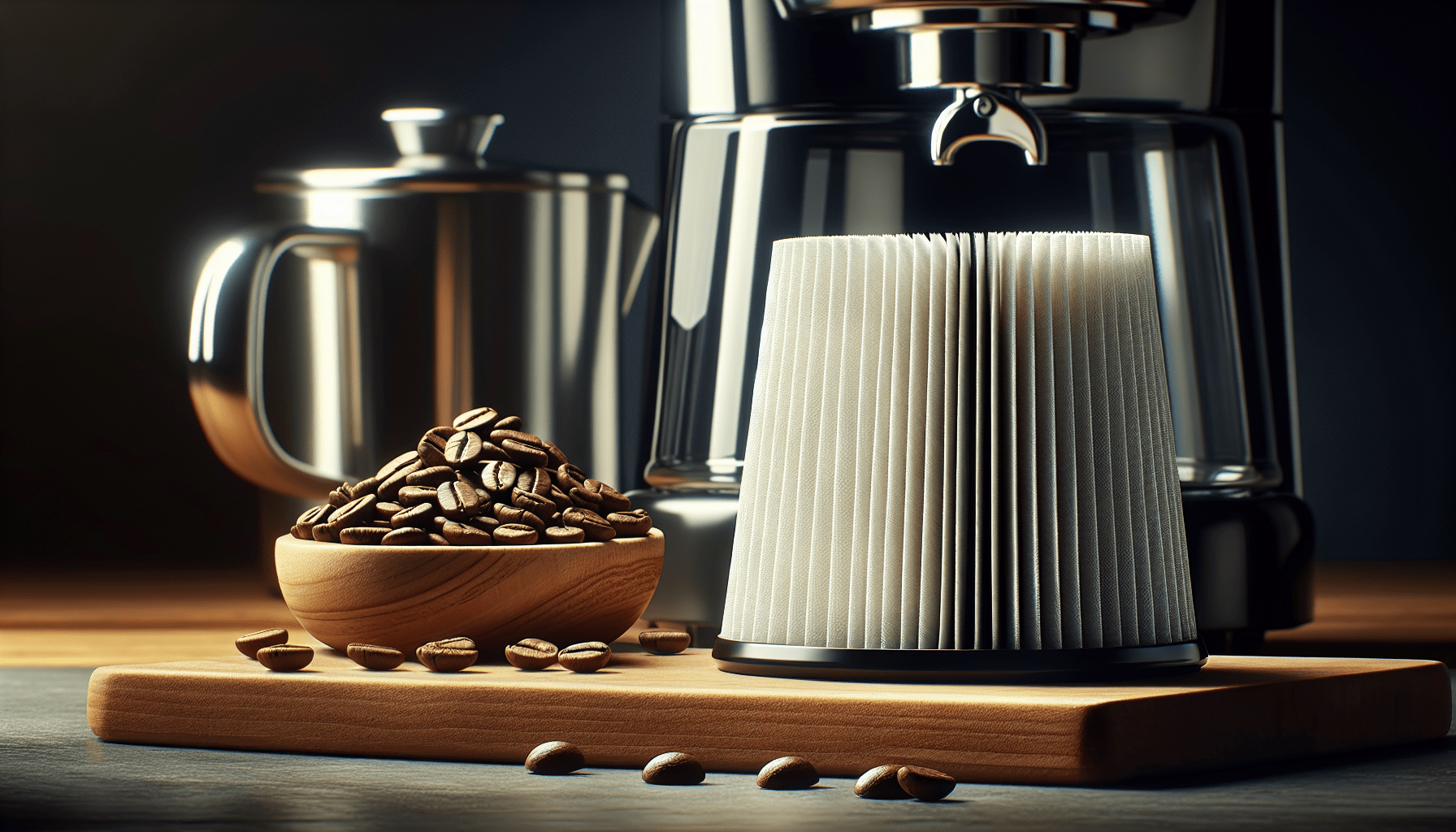So, you’ve finally invested in your dream espresso machine, and you’re eagerly looking forward to sipping velvety smooth shots of espresso from the comfort of your home. But hold on a second – did you know that your espresso machine requires regular maintenance to ensure it delivers peak performance? One crucial aspect of upkeep is descaling, a process that removes mineral deposits and ensures your machine remains in tip-top shape. In this article, we’ll take you through the step-by-step process of descaling your espresso machine, ensuring you can continue to enjoy those perfect cups of coffee for years to come. Let’s dive in!
Understanding Descaling
What is descaling?
Descaling refers to the process of removing mineral deposits and limescale buildup from the internal components of your espresso machine. Over time, the minerals in the water you use to brew your espresso can accumulate and create a layer of scale, which can negatively impact the machine’s performance and the taste of your coffee. Descaling helps to remove these deposits and ensure that your machine continues to function optimally.
Why is descaling important?
Descaling is essential to maintain the longevity and performance of your espresso machine. Regular descaling prevents the buildup of limescale, which can clog the internal pathways of the machine, affecting its ability to brew espresso and steam milk properly. If left unaddressed, scale buildup can lead to decreased water flow, improper heating, and reduced extraction quality. Descaling also helps to maintain the flavor of your espresso by removing any residual mineral deposits that can alter the taste of your coffee.
When should I descale my espresso machine?
The frequency of descaling depends on several factors, including the hardness of your water and how often you use your machine. As a general guideline, it is recommended to descale your espresso machine every 2-3 months. However, if you notice a decrease in performance or detect a change in taste, it may be necessary to descale more frequently. Some machines have built-in descaling indicators, while others require manual monitoring. Refer to your machine’s user manual for specific guidelines on descaling frequency.
What happens if I don’t descale my machine?
If you neglect to descale your espresso machine, the scale buildup can lead to several issues. Firstly, it can affect the temperature stability, causing the machine to underperform and produce inconsistent results. The scale can also clog the heating element or thermoblock, leading to decreased water flow or even a complete blockage. Furthermore, the flavor of your espresso may be compromised, as the mineral deposits can impart an off-taste. Neglecting descaling can ultimately shorten the lifespan of your espresso machine and result in costly repairs or even the need for a replacement.
Choosing a Descaling Solution
Researching descaling solutions
When selecting a descaling solution, it is essential to research and choose a product that is specifically formulated for espresso machines. Avoid using household cleaning agents or vinegar, as they may be too harsh and can damage the internal components of your machine. Look for descaling solutions that are recommended by the manufacturer of your espresso machine or have positive reviews from other espresso enthusiasts.
Considerations for choosing a solution
Consider the composition of the descaling solution you choose. Ideally, it should be effective at removing scale deposits while being safe for your machine and the environment. Look for descaling solutions that are non-toxic, biodegradable, and odorless. Additionally, consider the ease of use and follow the instructions provided with the product to ensure proper utilization.
Popular descaling products in the market
There are several reputable descaling products available in the market. Some popular options include:
- Urnex Dezcal: This descaling powder is widely recommended for espresso machines. It is non-toxic, biodegradable, and safe for all machine parts.
- Durgol Swiss Espresso Descaler: Known for its efficient descaling properties, this solution is easy to use and guarantees a thorough removal of limescale.
- Cafetto Restorer Espresso Machine Descaler: This eco-friendly descaling liquid is designed to be non-toxic and effective in removing scale buildup.
Before making a final decision, read reviews and compare the features and suitability of each descaling solution for your specific espresso machine.

Preparing Your Espresso Machine
Read the user manual
Before beginning the descaling process, familiarize yourself with the manufacturer’s instructions as outlined in the user manual. Each espresso machine is unique in its design and may have specific descaling procedures. The manual will provide you with valuable information on which solutions to use, any specific steps to follow, and any precautions to take.
Safety precautions
While descaling your espresso machine is a relatively straightforward process, it is important to prioritize safety. Ensure that the machine is unplugged and has completely cooled down before initiating the descaling process. Additionally, protect your hands by wearing rubber gloves and work in a well-ventilated area to avoid inhaling any fumes that may arise during the process.
Gather necessary materials
Before you begin descaling your machine, gather all the necessary materials to ensure a smooth process. You will need:
- Descaling solution: As discussed earlier, choose a descaling solution that is suitable for your espresso machine.
- Water: Depending on the descaling solution you choose, you may need to dilute it with water. Ensure you have a sufficient amount of clean water on hand.
- Empty container: Prepare a container to collect the discarded descaling solution from your machine.
- Soft cloth or sponge: Have a soft cloth or sponge ready to clean and wipe down the exterior of the machine after the descaling process.
- Portafilter and other removable components: If your machine allows, detach the portafilter, brew group, and any other removable components that require individual descaling.
Having these materials readily available will make the descaling process more efficient and convenient.
Performing the Descaling Process
Step 1: Emptying the water reservoir
Start by removing any water remaining in the machine’s reservoir. Discard the water and ensure the reservoir is completely empty before proceeding with the descaling process. If the machine has a filter, remove it as well.
Step 2: Mixing the descaling solution
Prepare the descaling solution according to the instructions provided with the product. If the solution requires dilution with water, ensure you follow the recommended ratio.
Step 3: Running the descaling solution through the machine
Pour the descaling solution into the water reservoir of your espresso machine. Ensure that the solution completely covers the minimum fill line. Place an empty container under the brew head or steam wand to collect the discarded solution.
Follow the manufacturer’s instructions on how to initiate and run the descaling cycle. Most machines have a dedicated descaling or cleaning mode that can be activated. Allow the machine to run the descaling solution through its internal components, including the boiler, pipes, and valves. This process helps dissolve and remove any scale buildup.
Step 4: Soaking the parts in the solution
If your espresso machine has detachable components like the portafilter, brew group, or steam wand, soak them in the descaling solution as recommended by the manufacturer. This step ensures that all parts are thoroughly descaled and free from mineral deposits.
Step 5: Rinsing the machine thoroughly
After the descaling process is complete, thoroughly rinse the water reservoir, portafilter, brew group, and any other components that were soaked. Use clean water to flush out any remaining descaling solution. Run a few cycles of clean water through the machine to ensure all traces of descaler are eliminated.

Cleaning Individual Espresso Machine Components
Descale the portafilter
To descale the portafilter, soak it in the descaling solution for the recommended amount of time. Once soaked, scrub the filter basket, spouts, and portafilter handle with a brush to remove any remaining scale. Rinse the portafilter with clean water and dry it before reassembling it back into the machine.
Descale the brew group
For machines with removable brew groups, follow the manufacturer’s instructions on how to remove and clean it. If the brew group is not removable, refer to the manual for recommendations on cleaning it. Soak the brew group in the descaling solution to dissolve any scale deposits. Use a brush to scrub away any remaining residue. Rinse the brew group thoroughly with clean water and reinsert it into the machine.
Descale the steam wand
To descale the steam wand, detach it from the machine if possible. Soak the wand in the descaling solution for the recommended time, then use a small brush to scrub away any scale buildup. Rinse the wand with clean water and reattach it to the machine.
Troubleshooting and Tips
What to do if descaling solution doesn’t descale fully
If you find that the descaling solution did not completely remove all scale deposits, you can repeat the descaling process or try using a stronger solution. Ensure that you follow the manufacturer’s instructions and use the recommended solution for your specific machine.
Dealing with stubborn scaling
In some cases, stubborn scale deposits may require additional attention. You can use a descaling agent specifically designed for heavy-duty descaling or consult the manufacturer or a professional for guidance. Avoid using abrasive tools or harsh chemicals that could damage the machine.
Tips for preventing scale buildup in the future
To minimize scale buildup and prolong the time between descaling, consider the following tips:
- Use filtered or bottled water: Using water with a lower mineral content can significantly reduce the rate at which scale accumulates in your machine.
- Regularly clean and maintain your machine: Keep the external surfaces and removable parts clean to prevent scale from adhering to them.
- Stay consistent with descaling: Follow the recommended descaling frequency to ensure that scale deposits do not have a chance to become severe.

Maintenance and Regular Descaling
Frequency of descaling
As mentioned earlier, the frequency of descaling depends on factors such as water hardness and usage. Generally, descaling every 2-3 months is sufficient for most home espresso machines. However, if your water is particularly hard or you use the machine more frequently, more frequent descaling may be necessary. Refer to your machine’s user manual for specific recommendations.
Other maintenance tasks for optimal performance
In addition to regular descaling, there are other maintenance tasks you can perform to keep your espresso machine in optimal condition. These include:
- Backflushing: Some machines with a three-way solenoid valve may require periodic backflushing to remove coffee oils and residue from the valve.
- Cleaning the shower screen: Regularly remove and clean the shower screen to prevent coffee grounds from accumulating and affecting water distribution.
- Emptying and cleaning the drip tray and grounds container: Regularly empty and clean these components to prevent mold or bacteria growth and ensure proper drainage.
Follow the manufacturer’s recommendations for these maintenance tasks to ensure you are caring for your espresso machine properly.
Professional Servicing and Repair
When to seek professional help
While regular maintenance and descaling can help prolong the life of your espresso machine, there may be instances where professional servicing or repair is required. Consider seeking professional help if:
- Your machine is not functioning properly even after descaling and basic troubleshooting.
- You notice leaks or significant damage to the machine.
- There are unusual noises, smells, or other indications of a malfunction.
Professional technicians are experienced in diagnosing and repairing espresso machines, and they can provide the necessary expertise to resolve complex issues.
Choosing a reputable service center
When selecting a service center for your espresso machine, consider the following factors:
- Experience and expertise: Choose a service center with a proven track record and experience in repairing espresso machines.
- Brand authorization: If your espresso machine is still under warranty, choosing an authorized service center ensures that the warranty remains valid.
- Reputation and reviews: Read reviews and seek recommendations from other espresso machine owners to gauge the reputation and quality of service of potential service centers.

Common FAQs about Descaling Espresso Machines
How long does the descaling process take?
The duration of the descaling process can vary depending on your specific machine and the descaling solution used. Typically, the descaling cycle lasts between 15 to 30 minutes. However, this does not include the time required for soaking individual components or rinsing the machine thoroughly.
Can I use vinegar instead of a descaling solution?
While vinegar is sometimes recommended as a DIY descaling solution, it is generally not recommended for espresso machines. Vinegar is acidic and can potentially damage the internal components of your machine. It may also leave behind a residual taste that could affect the flavor of your espresso.
Is descaling necessary if I use filtered water?
Even with the use of filtered water, descaling is still necessary. While filtered water can help reduce the frequency of scale buildup, it does not entirely eliminate it. Over time, mineral deposits can still accumulate and affect the performance and taste of your espresso machine.
Conclusion
Regular descaling is a critical aspect of maintaining the performance and longevity of your espresso machine. By understanding the importance of descaling, choosing the appropriate solution, and following the proper steps, you can ensure that your machine continues to brew delicious espresso for years to come. Incorporate descaling into your regular maintenance routine, and enjoy the full potential of your espresso machine with every cup of coffee you brew.
